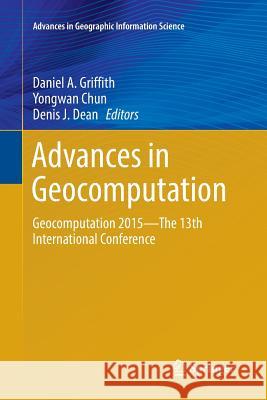Advances in Geocomputation: Geocomputation 2015--The 13th International Conference » książka
topmenu
Advances in Geocomputation: Geocomputation 2015--The 13th International Conference
ISBN-13: 9783319794273 / Angielski / Miękka / 2018 / 447 str.
Kategorie BISAC:
Wydawca:
Springer
Seria wydawnicza:
Język:
Angielski
ISBN-13:
9783319794273
Rok wydania:
2018
Wydanie:
Softcover Repri
Ilość stron:
447
Waga:
0.64 kg
Wymiary:
23.39 x 15.6 x 2.39
Oprawa:
Miękka
Wolumenów:
01
Dodatkowe informacje:
Wydanie ilustrowane











